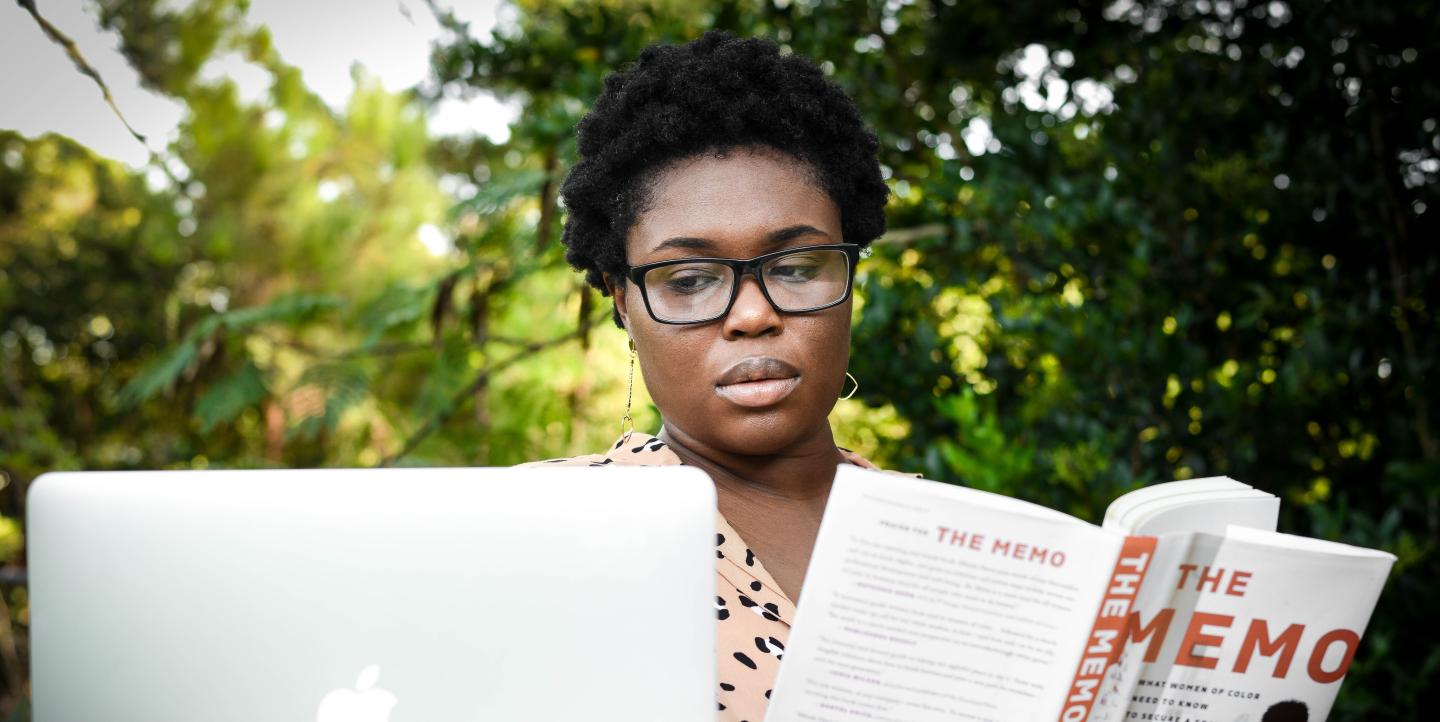Too often, journalists write about marginalized communities, focusing mainly on their problems. Not Oscar Perry Abello (Next City) and Priti Salian (freelance), who have long written with and for communities. Between them, they’ve produced more than 75 stories exploring what’s working to help people overcome barriers to inclusion, equality, and prosperity in the economy, education, medicine and beyond.
Abello and Salian spoke with the Solutions Journalism Network’s 2021 and 2020 LEDE fellows — competitively selected journalism entrepreneurs spreading solutions journalism — about how to report solutions stories for/with communities that have been deprived of power, privilege and resources. Below are Abello and Salian’s five main tips. You can also check out the full one-hour discussion, where they walk through examples in their own reporting:
Study and reference the history of the community you’re covering
“People aren’t marginalized because they’re lazy,” Abello said, in talking about the way systemic racism affects everything from the way people are denied business loans and housing. Instead, he noted how important it is for journalists to help their audiences understand how such communities came to be oppressed — whether through formal legislation or subtler acts of exclusion.
For instance, one of Abello’s recent stories explores how community land trusts are providing affordable housing and job opportunities for Black communities in New Orleans. In that piece, he included the history of how the city’s African American population was excluded from economic opportunities in the first place, pointing to redlining laws that prevented them from gathering capital, saving capital, and investing in or owning real estate.
Acknowledge the community’s agency
Abello similarly suggested that good (and accurate) solutions journalism must acknowledge the ways people are working on their own to address the problems they face. “These communities aren’t damsels in distress waiting for a knight in shining armor to come and save them,” he said. Abello encouraged journalists to cover what people are doing with their own resources to address the challenges they face. For instance, in a recent story about formerly incarcerated people looking for work, he explores how a group of women launched a worker-owned food business that’s been successful in fundraising, organizing and business management.
Salian agreed. In her latest for The Guardian, she learned that research into how to treat rare diseases in India began with patients’ organizations — the very people facing those diseases. “[Patients facing diseases] often take it upon themselves to initiate and fund drug research since governments have always been reluctant to focus on small groups,” she said.
Tackle sensitive information thoughtfully
Salian noted that it’s often crucial for journalists to think about how best to find information on sensitive topics. “For instance, it is thoughtless to ask a mom what the life expectancy of her terminally ill child could be,” she said, suggesting journalists consult research or ask a doctor instead. “Family members, friends, and others who know your sources may be able fill gaps about information that is factual, but difficult to ask directly,” she added.
She also said that journalists should be thoughtful about the language they use in their stories. “Say ‘life-threatening illness’ instead of ‘no one with X illness has lived beyond 12 years,’ ” she said, suggesting journalists talk to their editors to ensure the editors understand — and support — the reasons behind important language choices.
Resist extraction
Abello suggested that many stories can be found in how communities have worked to fight the ways people in power have stripped them of resources. “How did this community bring other people into their vision to manage money, or to structure a business?” he asked. His recent story on worker-owned cooperatives in the United States answers that question by examining the specific tactics workers used to fundraise and deploy capital in a way that’s equitable.
In reporting on extraction, Salian added that it’s important for journalists themselves not to be extractive. Journalists, she said, should strive to acknowledge the circumstances their sources face. “Sometimes, interviews with marginalized and underprivileged communities can pose hurdles when people don’t speak the same language, do not own phones or have access to data or wi-fi,” she said. She noted how emotional barriers can be the biggest roadblock, especially if the story is about a situation that may never change. For instance, when Salian reported on a dating app serving people with disabilities, she divided her conversations over several calls and meetings, since some interviewees found it easier to chat with two or three friends they know and trust. In other words, rather than expecting people to talk in ways that were most convenient for her, she worked to create an environment where her sources would feel comfortable and safe.
Craft your narrative with an eye to your source’s preferences and best interests
Salian reminded journalists to be careful about language and framing — encouraging them to ask sources how they would like to be described in a story, rather than making assumptions. She gave the example of what she did when reporting a story on a magazine by and for journalists who have been forced to leave their home countries. When a source told Salian she didn’t want to be associated with the word refugee, Salian respected the source’s wishes by omitting that label and instead using “exiled” as a descriptor.
Salian also takes care in deciding whether to use what a source says. Sources sometimes don’t understand the consequences of what they say, she said. “Once, a young deaf girl mentioned that she cheated through her undergraduate course exams to pass and wanted me to mention it in my story to stress the dismal state of education for deaf kids. I decided to leave out the information thinking it may affect her job prospects adversely,” Salian said. Instead, she included national data to show the barriers deaf children face.
This story was originally published by the Solutions Journalism Network and republished on IJNet with permission.
Photo by Mikelya Fournier on Unsplash.

